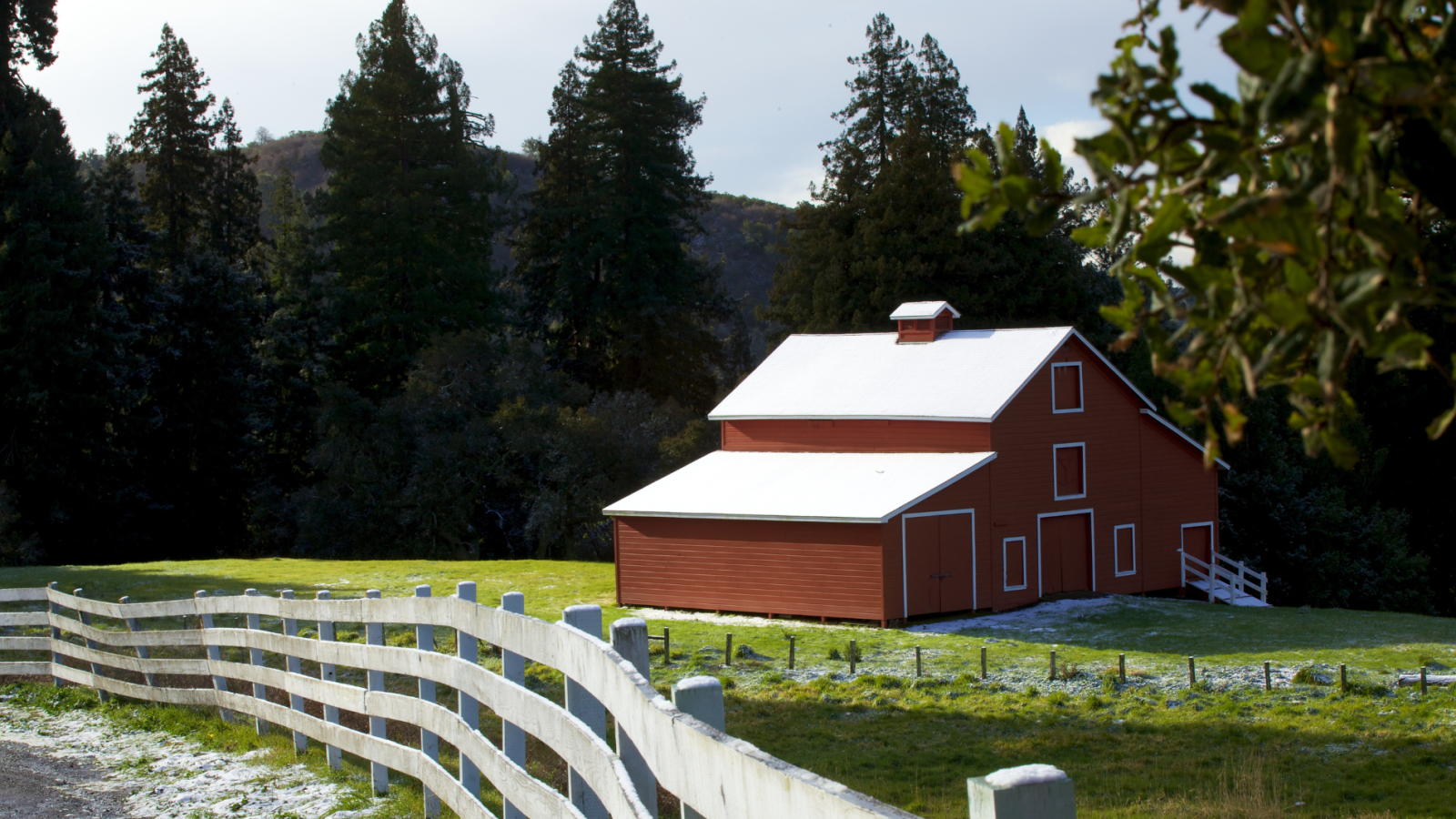The iconic red barn in Midpen’s La Honda Creek Open Space Preserve, as seen from Highway 84, serves as a visual gateway to the rural San Mateo County Coastside. Over the past couple of months, it has been under construction, receiving a new roof that will help the 120-year-old historic structure continue withstanding the elements, including better protection from potential fires. Midpen has maintained the barn since acquiring the property, conducting a major restoration effort in 2002 and periodically applying fresh coats of red paint.
The barn was originally built around 1900 by the Weeks family for housing ranch animals and storing equipment and hay. Today, the red barn visually preserves the Coastside’s deep agricultural roots and rural heritage for residents and visitors — cattle still graze the surrounding pasture as part of Midpen’s conservation grazing program and our ranching tenants use the barn for storage — all in alignment with the agricultural aspects of our coastal mission.
The barn is also important to Midpen’s work in protecting and restoring the natural environment as the only known location in all of Midpen’s lands, and throughout the San Francisco Peninsula, where rare pallid bats successfully raise their young each year.
These California species of special concern group together in a maternity roost, giving birth to their pups in the barn’s safe and warm environment, and caring for them until they learn to fly and hunt alongside their mothers by late summer. Pallid bats are unique for their ability to hunt prey (including scorpions!) from the ground, making them partial to open grassland environments like those surrounding the red barn.
"Bats are an essential part of a healthy ecosystem. They help regulate insect populations, including agricultural pests," Midpen biologist Matt Sharp Chaney said. "According to Bat Conservation International, the annual insect control bats provide is worth an estimated $23 billion to U.S. agriculture. They are a natural insecticide."

